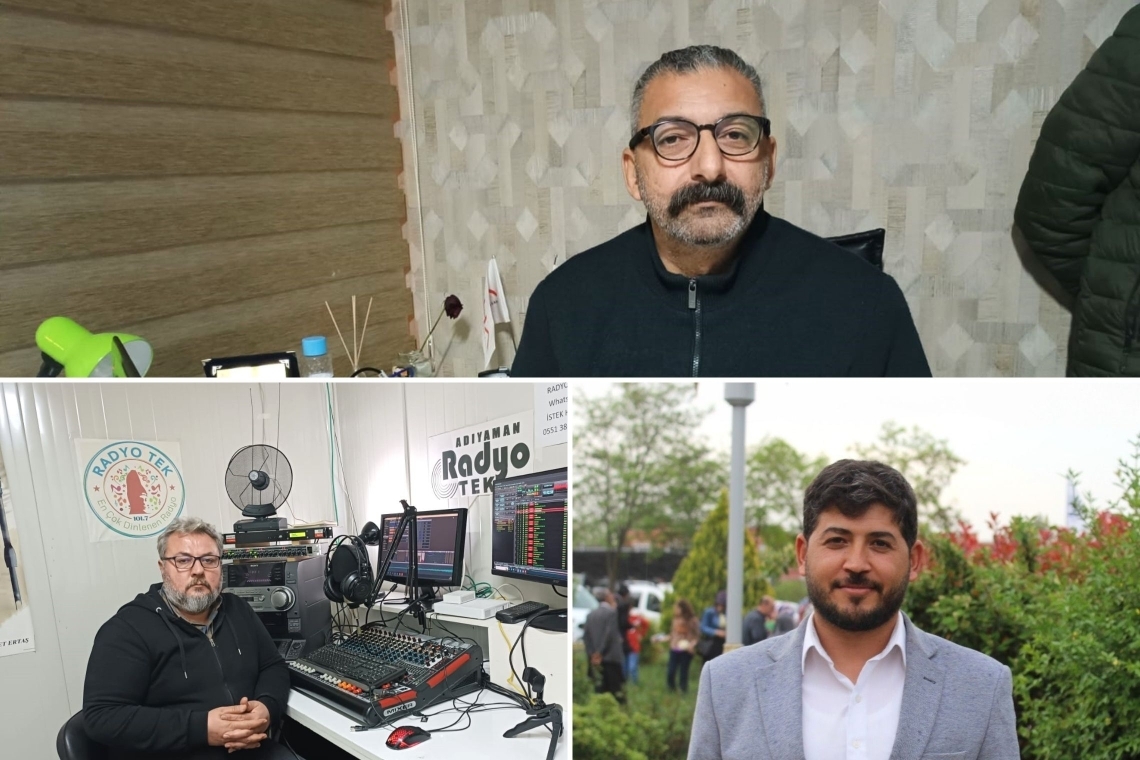In the aftermath of the February 6 earthquakes that devastated Turkey and Syria, Adıyaman’s local media has been struggling to recover, with many media outlets on the verge of collapse. Local journalists and press organizations in the city, now often referred to as "Acıyaman" due to the extensive destruction, are warning that without urgent support, local democracy and the public’s right to information are at serious risk.
ÖMER KARAKUŞ
The earthquakes caused severe damage in Adıyaman, one of the hardest-hit areas, leaving thousands still living in container cities. Issues like access to transportation, housing, healthcare, and education remain unresolved, and local journalists, many of whom are also survivors, are working under extremely difficult conditions.
Burned equipment, but the broadcast continued
Tek FM and Medya Tek newspaper, established in 1994, were among the local outlets that immediately resumed operations from a makeshift tent studio after the disaster. Despite suffering major losses, their sole goal was to keep the public informed. Zeynal Selahattin Alptekin, the owner of Tek FM and Medya Tek, recalled how the summer heat caused their equipment to overheat and malfunction, but they replaced it and continued broadcasting. “We used our savings to survive this period, paying electricity bills for our two transmitters, one in the city center and one outside. Most businesses, from which we used to get advertisements, are gone. We are truly struggling to continue reporting under these conditions,” Alptekin said.
State support needed for local media
According to Alptekin, not much has changed in Adıyaman in the year and a half since the earthquake. Local media, heavily reliant on local advertising, cannot sustain itself as businesses remain unable to reopen. He urged for financial relief, especially for radio stations, such as discounts on electricity bills. “We can’t find advertisers or make money. We are still broadcasting from container cities. We also have a weekly newspaper, but with rising printing costs, we can barely afford to print. Local media needs government support and access to national advertisements to survive,” Alptekin added.
Remaining media fights to survive
Adıyaman’s press has been both financially and emotionally damaged. Several journalists lost their lives in the earthquake, and media outlets’ buildings were destroyed. Those that remain are operating with limited resources. Abdurrahman Akçal, news director at Perre News Agency, emphasized that local media is in a deep crisis. Journalists, many of whom live in container cities, lack the necessary equipment and internet access to work effectively. “Cameras, microphones, and computers are critical, and without them, producing news is nearly impossible. If the current situation continues, the media's ability to inform the public will disappear, leaving Adıyaman’s citizens uninformed,” Akçal warned.
The role of the media in disaster recovery
Local media in Adıyaman has played a crucial role in reporting on rescue and relief efforts since the February 6 earthquakes. However, the decline of local press operations is raising concerns. Akçal stressed that if media organizations are not supported, local democracy will suffer. “Local media isn’t just about preserving culture; in disasters like earthquakes, floods, and fires, the press is vital for quickly informing the public,” he said.
Print costs have increased by 500%
Mehmet Akıncı, news director of Adıyaman’da Haber newspaper, said inflation and the lack of advertisers have crippled local print media. “Printing costs have increased by nearly 500%. We’ve lost staff because we can’t afford the expenses. Even though we try to keep our news portal alive by writing the stories ourselves, we can’t keep up with inflation. We lost equipment in the earthquake, but we’re still fighting to stay afloat,” Akıncı explained.
Adıyaman’s local media, with just two television stations, five radio stations, four daily newspapers, one news agency, and a few weekly papers still operational, is calling for immediate technical and financial support to ensure the city’s residents continue to have access to reliable news.



